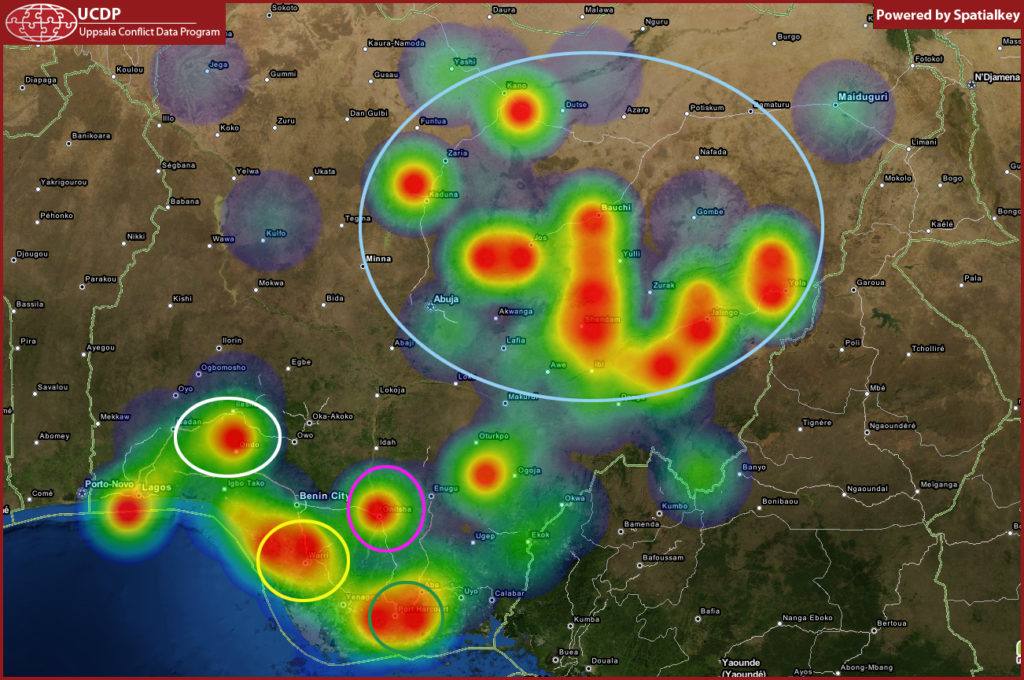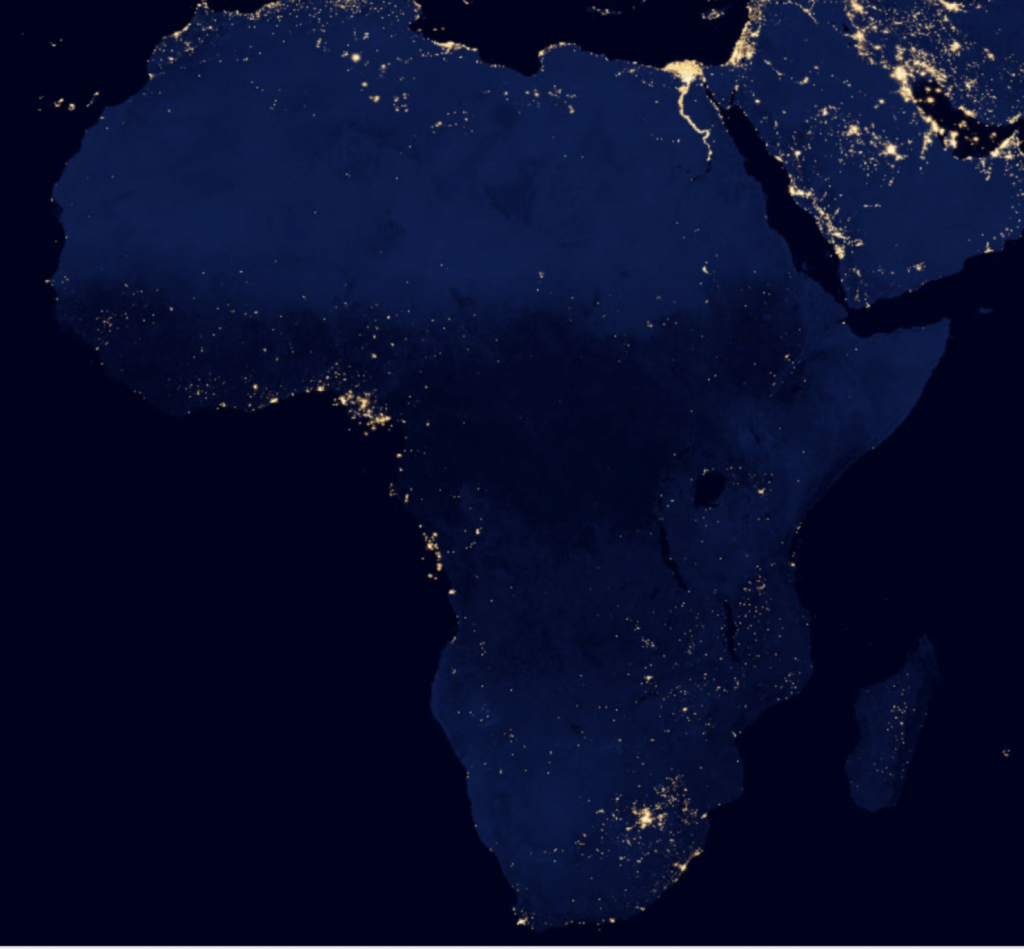By Roland Hodler and Paul A Raschky
Nighttime light intensity can be used as a measure of economic activity at the subnational level, opening up new avenues for research on the determinants of civil conflict.
Numerous economic scholars have investigated the impact of economic shocks on civil conflict in Africa (e.g. Miguel et al. 2004). Most of these studies look at the effect country-level income shocks on the prevalence of civil conflict in this country.
Our study, moves beyond the country level and investigates the link between economic shocks and civil conflict at the subnational level.
So far, an analysis of the effect of economic shocks on conflict at the subnational level was constrained by a lack of high quality, regional GDP estimates. However, an emerging strand of studies (e.g. Hodler Raschky 2014b) has applied nighttime light intensity data as a measure for economic activity at the subnational level.
This measure allows us to study, for the first time, the effects of economic shocks on civil conflict in Africa at the regional (specifically at the second federal level, GADM2) level using nighttime light data from 5,689 administrative regions (i.e. districts and counties) in 53 African countries.
What data do we use?

Source: https://uppsalaconflictdataprogram.wordpress.com/maps/
We sourced our data on subnational civil conflict from UCDP GED, which is an event-based and georeferenced dataset on organized violence in Africa between 1989 and 2010. For each individual event of violence there is information on the place of the event (with coordinates), the date of the event, the actors participating in the event, and the estimates of fatalities.

To measure economic activity, we used nighttime light data captures the intensity of man-made nighttime light around the world. It is collected by US Air Force weather satellites and analysed by the National Oceanic and Atmospheric Administration (NOAA), which removes unreliable observations (such as those affected by lunar or solar light, cloud coverage or fire) to produce annual data on a scale from 0 to 63, with higher values indicating more intense nighttime light, for output pixels corresponding to less than one square kilometre.
We used local and yearly variation in precipitation and drought severity to predict local economic shocks. Data on monthly precipitation was obtained from the Climatic Research Unit, which provides this data on a 0.5 × 0.5 degree grid resolution. In addition, we accessed data on the Palmer Drought Severity Index (PDSI), which combines precipitation, temperature and local soil characteristics. Dai et al. (2004) provide monthly PDSI on a 2.5 × 2.5 degree grid level.
What do we find?
In general, we find that regional economic activity has an important effect on the risk of civil conflict in Africa, confirming that the pattern observed at the national level holds at the more disaggregated level of subnational administrative regions. More specifically, our analysis reveals that an economic shock that reduces nighttime light by 10% increases the risk of civil conflict within a region by an average of 4.5% to 7.5%, suggesting that economic shocks have an important effect on the risk of regional conflict in Africa.
Access the data on data|in|space:
Most of the variables used in this stata are freely accessible in the Regional Development Indicators (RDI) database for Africa (version 0.1, beta).
References:
Dai, A., Trenberth, K.E., and Qian, T. (2004). A global data set of Palmer Drought Severity Index for 1870–2002: Relationship with soil moisture and effects of surface warming. Journal of Hydrometeorology 5, 1117–1130.
Hodler, R. and Raschky, P. A. (2014a). Economic shocks and civil conflict at the regional level. Economics Letters, 124, 530–53.
Hodler, R. and Raschky, P.A. (2014b). Regional favoritism. Quarterly Journal of Economics, 129(2), 995–1033.
Miguel, E., Satyanath, S., and Sergenti, E. (2004). Economic shocks and civil conflict: An instrumental variables approach. Journal of Political Economy, 112 (4), 725–753.